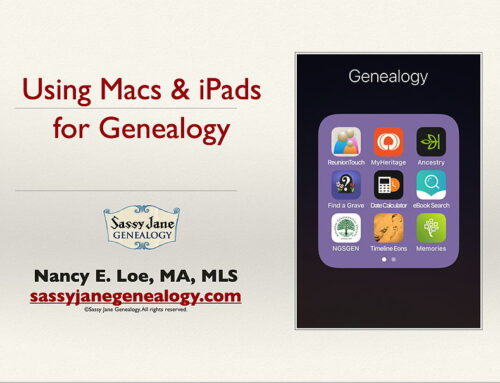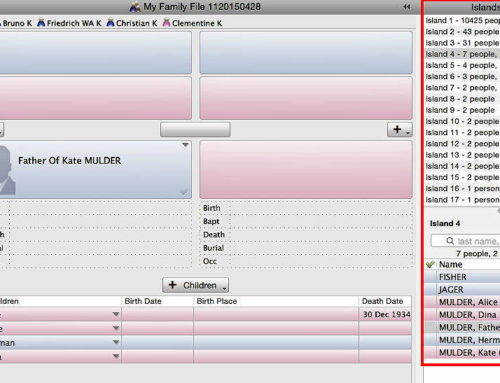Today’s topic is iPad and Mac diacritical marks.
If you’re using your iPad (or Mac) for genealogy, you probably need to add diacritical marks to names and places. If you’re a native English speaker like me, getting your keyboard to produce these characters may be an unfamiliar process.
A diacritical mark is a glyph (mark) added to a letter that changes how words are pronounced. These marks may appear above, below, within a letter, or in some cases between two letters. Ø, ü, è, ñ, ß, ÿ, ī, å are all examples of diacritical marks added to letters.
There are several ways to add diacriticals to individual letters on your iPhone, iPad, and/or Mac.
- Press lightly and hold the keys any vowel or C, L, N, S, Y and Z, then select the accented versions from the menu. (Shortcuts to legal and financial symbols appear by pressing and holding characters on the numerical keyboard.)
- Visit Adobe for a printable chart of the keyboard shortcuts for the standard Mac OS character set at adobe.com/type/pdfs/characcessmac.pdf.
- Visit the MacStories site for another list of navigational shortcuts by clicking here.
- Use the OS X Keyboard Viewer, part of the Mac OS X operation system, to reveal hidden diacritical characters by holding down the Option, Shift and other modifier keys. Go to Apple’s support page for this app for a tutorial. These extended characters are also available on an iPhone or iPad if you add a Bluetooth keyboard.
- Consider the PopChar app for a complete and easily accessible set of diacriticals for Mac OS X. Ergonis.com makes this application and I find it well worth the cost for its ease of use.
- Change the iPad’s settings to use keyboards for different languages and hardware layouts. Apple states, “Unlike physical keyboards, you can change the format of a software keyboard. This will also change the dictionary used for auto-correction, the number of letters on the keyboard, and the arrangement of the keys (for languages with alternative keyboard layouts).” Visit support.apple.com/kb/HT4509.
iPad and Mac diacritical marks can be an important part of your family history research, if you know where to find them.





Depends what software you use but the good thing is that most software now use UTF-8 ==> you can store most type of characters in name. I tested at Ancestry using farsi with no problem…..
e.g.
شاهین ==> which is Laji